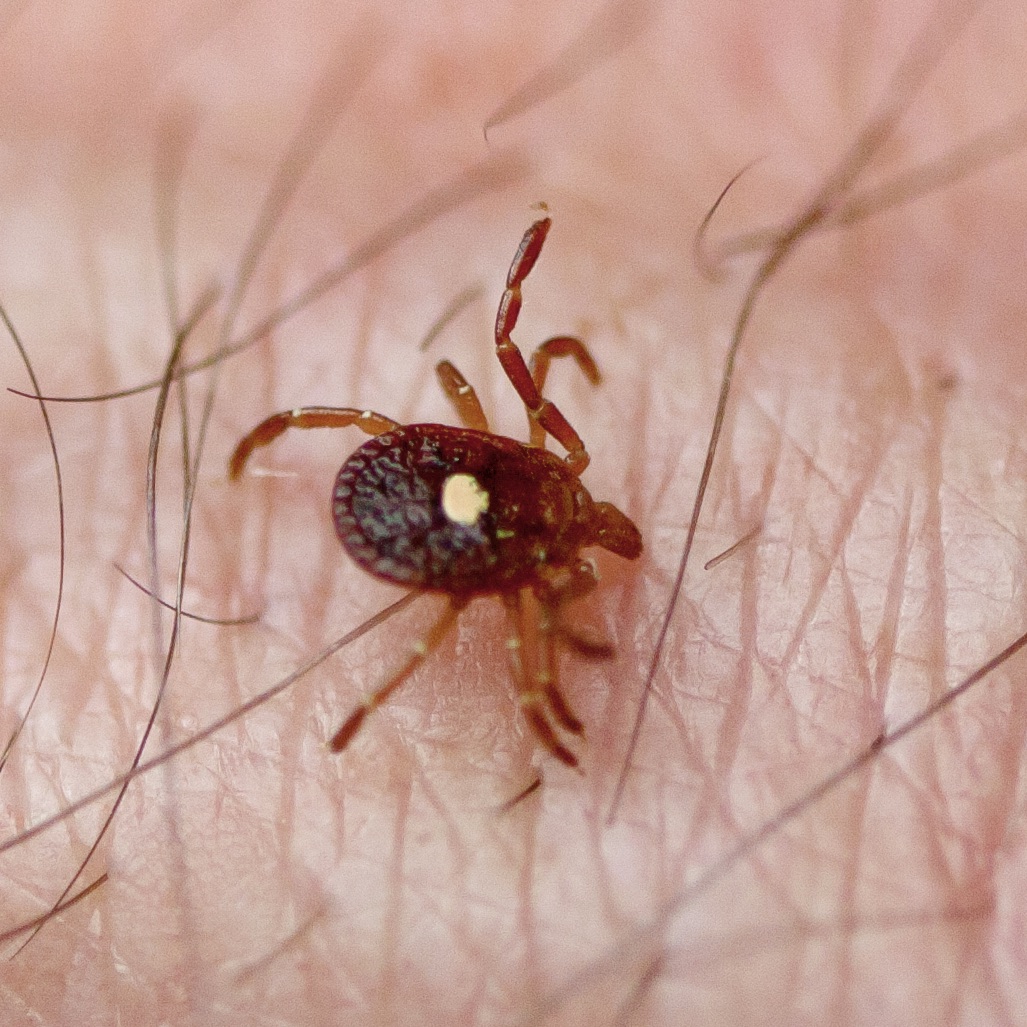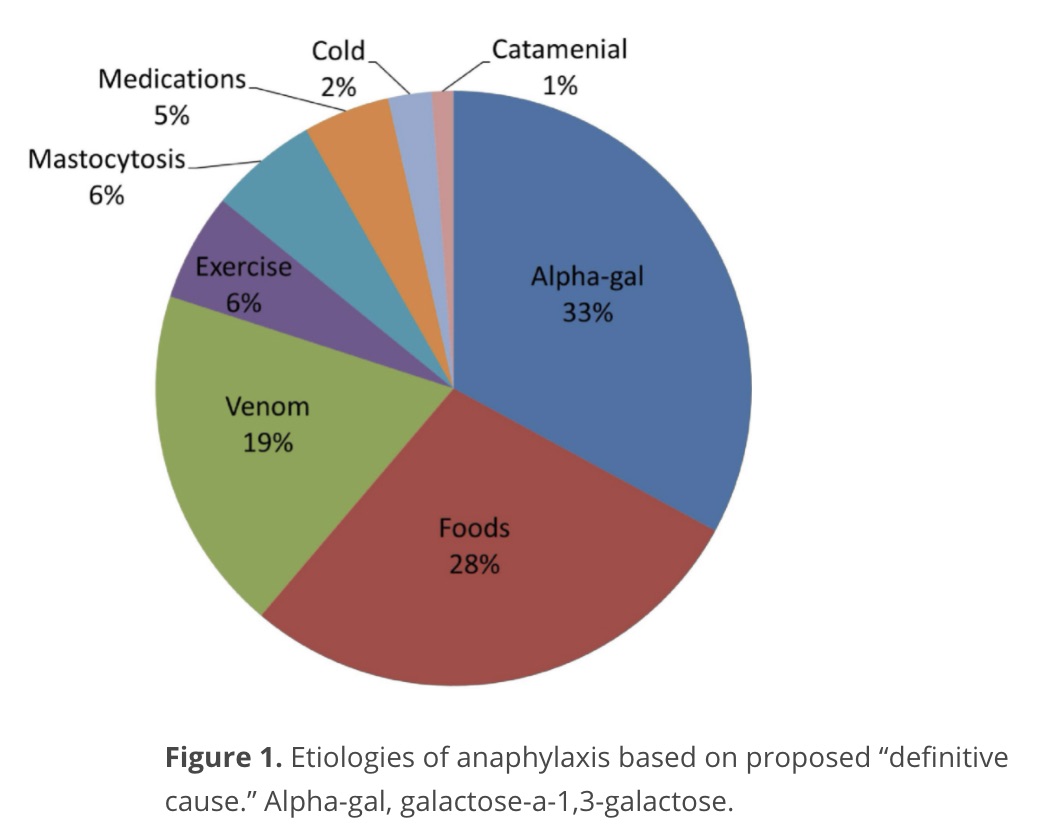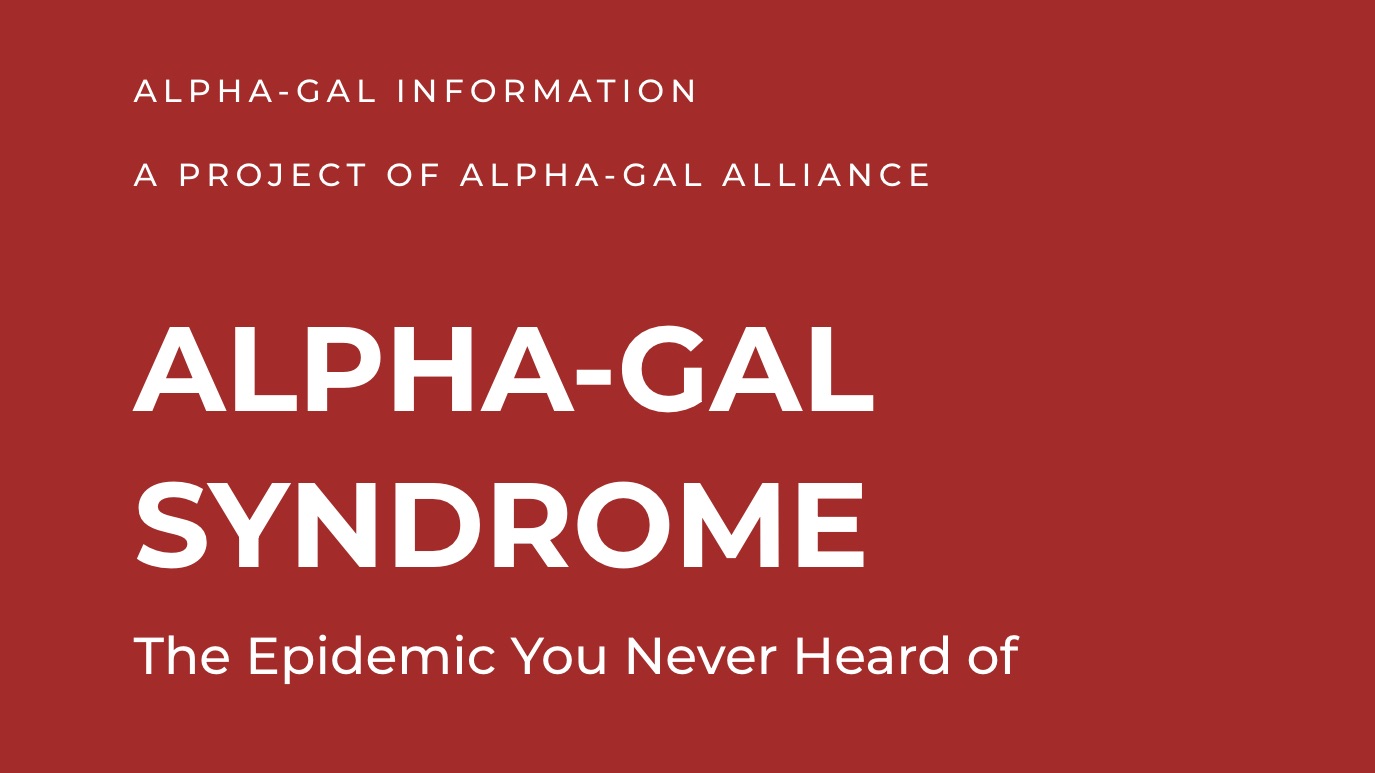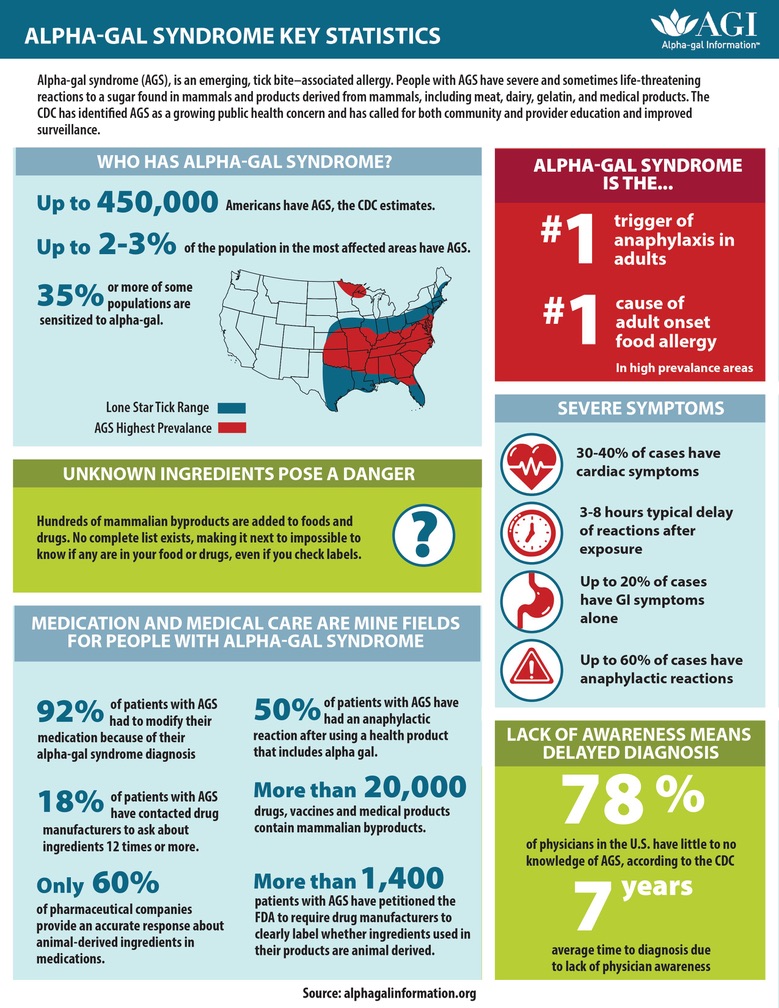
Giving voice to those affected by
alpha-gal syndrome
Make a Donation
Join Our Movement
Alpha-gal syndrome
an allergy and a tick-borne condition
Alpha-gal syndrome (AGS) is a serious, sometimes life-threatening allergy to a sugar found in most mammals and products containing alpha-gal. More than 60% of people with AGS have life-threatening, anaphylactic reactions,1,2,3 and a number of fatalities have occurred.4,5,6
Alpha-gal syndrome (AGS) develops after tick bites.7 In the United States, most cases are associated with lone star ticks, which are most common in the southern, midwestern, and mid-Atlantic United States.8

450,000 Americans
Up to 450,000 Americans have alpha-gal syndrome.8

10th most common food allergen
Alpha-gal syndrome is the 10th most common food allergen in the U.S.9

50% have severe reactions to medical products
50% of patients with AGS have had an anaphylactic reaction after using a health product that includes alpha-gal.10

More than 10 deaths
There are more than 10 confirmed deaths due to alpha-gal reactions to medical products alone.5

78% of providers
78% of providers know little or nothing about alpha-gal syndrome.11
Courtesy of Alpha-gal Information, an Alpha-gal Alliance project
2009 known cases
2017 estimated cases
2018 estimated cases
2022 estimated cases
A growing public health crisis
- The CDC has identified alpha-gal syndrome as a growing clinical and public health threat.8
- As lone star tick populations grow and their range expands, the number of alpha-gal syndrome cases grows, too.8,12
- According to the CDC, the number of new suspected cases of AGS is increasing by more than 15,000 a year.8
Our mission
Our mission is to advance policy solutions that improve the lives of people affected by alpha-gal syndrome.
How we work
We work in a scientifically-sound, collaborative, and bipartisan manner to serve the diverse community of those affected by alpha-gal syndrome.

Educate
Educate the public, decision-makers, and healthcare providers on key issues related to alpha-gal syndrome.

Collaborate
Collaborate with other organizations, experts, and those affected by AGS to develop and advocate for practical, effective policy solutions.

Mobilize
Mobilize the alpha-gal community to lobby lawmakers.

Advance
Advance the goals of the alpha-gal syndrome community by working with decision-makers.
Our areas of focus
Drugs & medical devices
Food
Education
Research & epidemiology
Prevention
Do you live in a high-prevalence area?
The estimated 450,000 cases of alpha-gal syndrome in the U.S. are NOT spread evenly over the whole country.8 They are concentrated in the southern, midwestern, and mid-Atlantic United States, particularly parts of Oklahoma, Kansas, Arkansas, Missouri, Mississippi, Tennessee, Kentucky, Illinois, Indiana, North Carolina, Virginia, Maryland, and Delaware, and Suffolk County, NY. Up to 3% of the population in the hardest-hit areas may be affected.8,13,14,15,18
Does your family live in a high prevalence area? What are your elected representatives doing about the alpha-gal syndrome crisis? Ask them!

Key statistics for high-prevalence areas

#1 tick-borne condition
Alpha-gal syndrome makes up the bulk of the tick-borne disease in states where lone star ticks are common.
Source: state health department statistics &CDC surveillance data

#1 cause of adult-onset allergy
Alpha-gal syndrome is the number one cause of adult-onset allergy in high-prevalence areas.16

Cause of 33% of anaphylactic reactions
In one study of people aged 9 and older in a high-prevalence area, AGS accounted for a third of all cases of anaphylaxis, more than all other food allergies combined.17
Courtesy of Alpha-gal Information, an Alpha-gal Alliance project
Join our movement
Help make a brighter future for people with alpha-gal syndrome. Membership connects you to a network of allies, experts, and fellow alpha-gal advocates and gives you a voice in shaping the policies needed to improve the quality of life for those with AGS.

Donate
100% of donations are used for our advocacy work
Alpha-gal Alliance Action Fund is run by volunteers, and our board covers all of our operating expenses. 100% of your support will be used to mobilize the alpha-gal community, educate key decision-makers, and advocate for policy change.
Donate Now
Learn more about
alpha-gal syndrome
Alpha-gal Information
Learn more about alpha-gal syndrome at Alpha-gal Information (AGI), the most extensive resource on alpha-gal syndrome. AGI is a project of our sister organization, Alpha-gal Alliance.
What people are saying
Please send us your comments using the “Send Us a Message or Comment” form below.
Contact Us
5614 Connecticut Ave., NW #114
Washington, DC 20015-2604
U.S.A
Info@AlphagalAction.org






